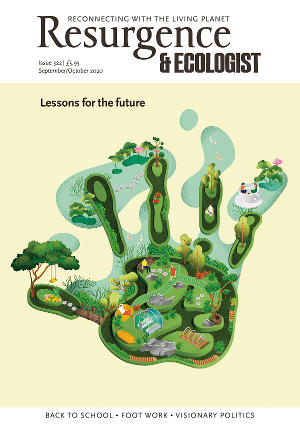Catherine Zabinski has produced a tour de force with Amber Waves. From her work as a soil and plant ecologist at Montana State University she pulls together the fascinating biological and social history of wheat. It is a story of human ingenuity across thousands of years. She takes us through the evolution of wheat from algae to simple grasses and explains how variation and diversity in the genome gives wheat such amazing adaptability to acclimatise across the globe. Starting in the Middle East, farmers refined wheat species by selecting for larger seeds, a process that continues to this day. In the 21st century, the great challenge is to breed the best variety while conserving variation, to maximise the possibilities for adaptation in changing environments.
The archaeological record shows that early farmers moved on when their grain crops depleted the fertility of soil. Later they employed burning or left fields fallow or intercropped with nitrogen-fixing plants like peas and beans to improve yields and to let the soil recover. Colonisers carried seeds around the globe, inadvertently acting as “evolutionary sieves” for particular traits. In 19th-century America for instance, Russian Mennonites arrived with a variety called Turkey Red, which proved so successful that by 1919 it was the only hard wheat grown, making up 30% of the entire North American crop of hard and soft wheat. Gradually, mechanised farming concentrated wheat production in the industrialised world and increased the land area under cultivation. Plant breeding in Western research centres brought about market domination by a few companies and a few successful strains.
Wheat is not just a food. It is also a political tool. Societies and governments control sales and prices and keep costs low for their people while extracting profit from sales abroad. But low prices force farmers to increase production. The famous dust-bowl effect in 1930s America happened when intensive ploughing turned dry land into dust, and crops failed; poor farmers were displaced and city dwellers choked to death in their thousands under the dark clouds of wind-swept agricultural soil. Today, alleviating starvation in developing countries by supplying seeds (and the fertilisers, pest-control products, irrigation systems and machinery to go along with them) creates dependency amongst the recipients. Sometimes subsistence farmers are driven off the land and replaced by multinational agribusiness.
Growing populations need increased food supplies, and wheat is high in energy, cheap and efficient to grow and has the advantage of being wind-pollinated. However, when grown as a monoculture, wheat destroys soil structures and reduces biodiversity. As more people eat higher up the food chain and consume more meat, agriculture requires more land to feed grain to animals. In spite of this, 50% of grain consumed worldwide is still produced on farms of less than 5 hectares.
Zabinski points out mistakes from the past and provides warnings for the future: she acknowledges that biotechnology works well, but she cautions that biodynamic systems continually change and outstrip the scientists. Of course, the pressing concern for the 21st century is whether wheat adaptation will keep up with climate change – the wheat genome is complex and plastic, so there is hope for developing new species. She suggests that the most promising way forward is to encourage governments to subsidise and incentivise ecologically sustainable practices like crop rotation and combining patchworks of productive and wildlife habitat to maintain the health of soil and the diversity of ecosystems. She argues that only careful husbandry of the land and thoughtful plant breeding can assure good grain crops into the future. “As a species,” she writes, “we have a stunning capacity for creativity and problem solving. Imagine if we focused all that capacity on optimizing agricultural production in the most environmentally sustainable way.” Imagine...







